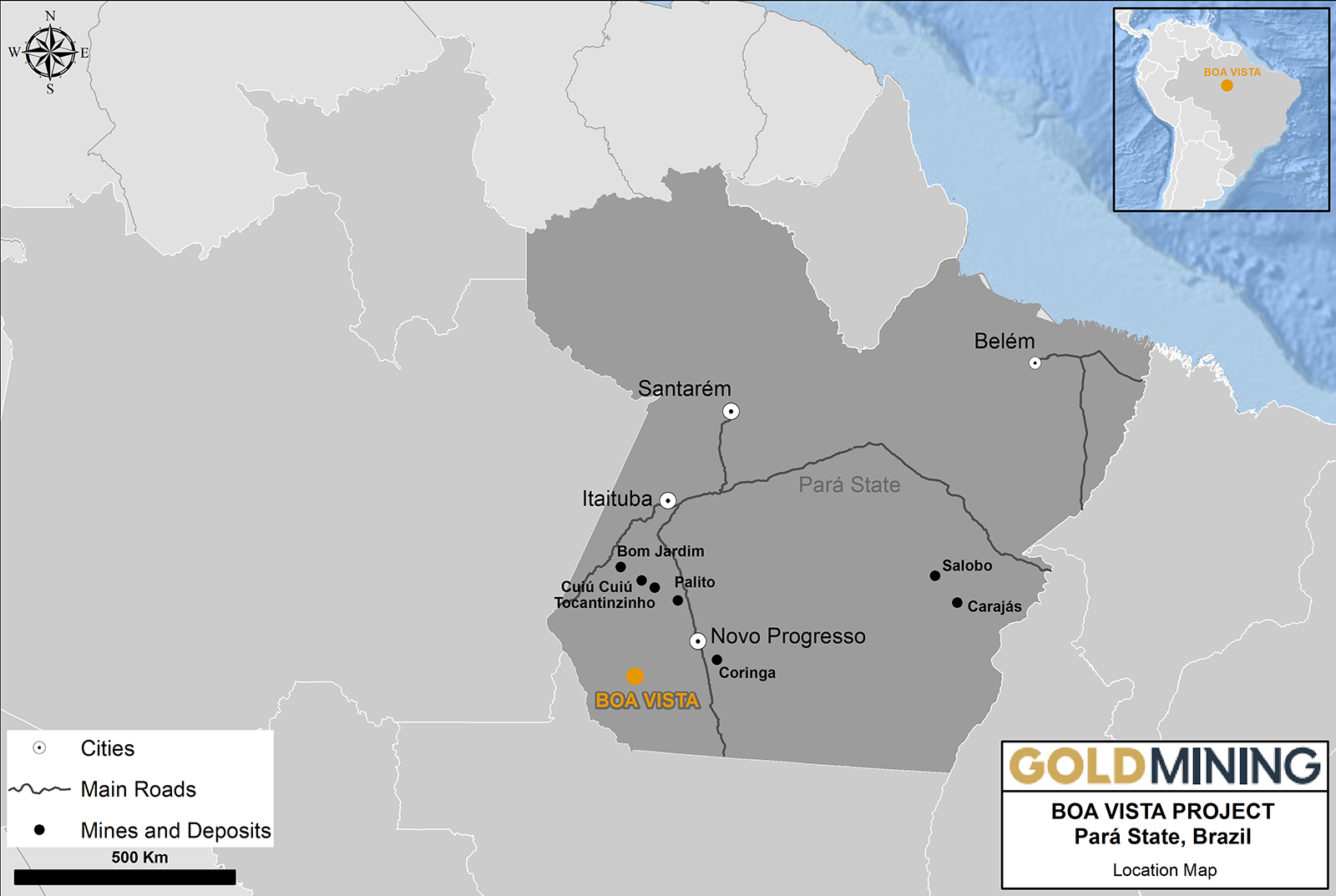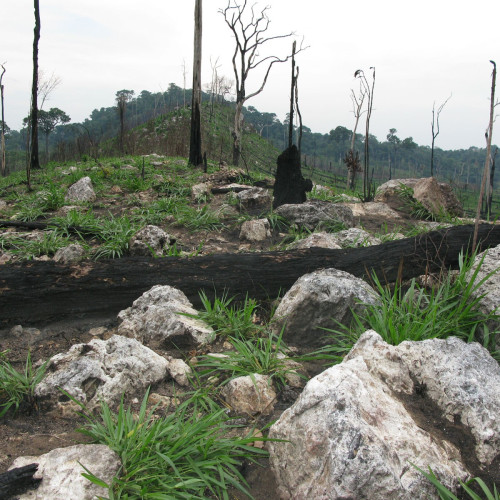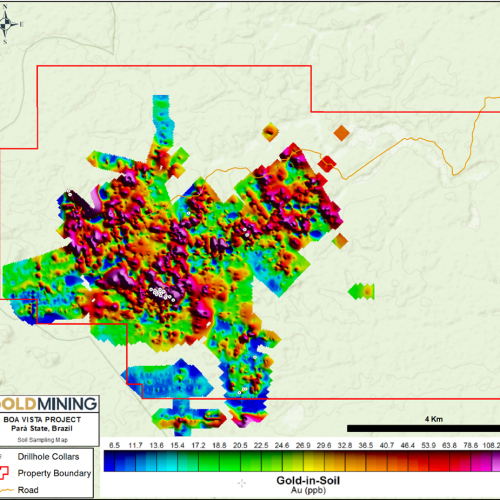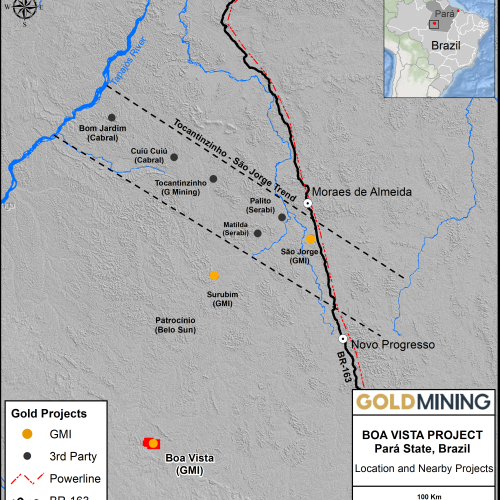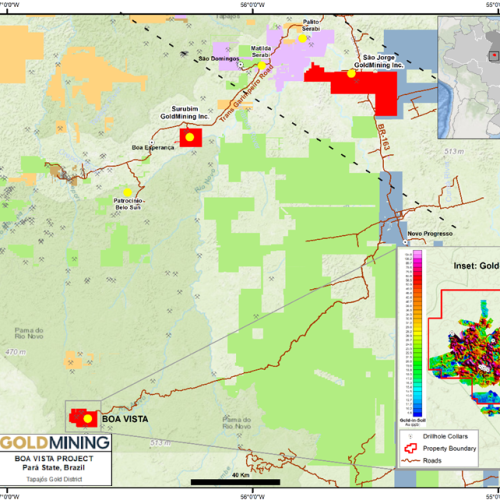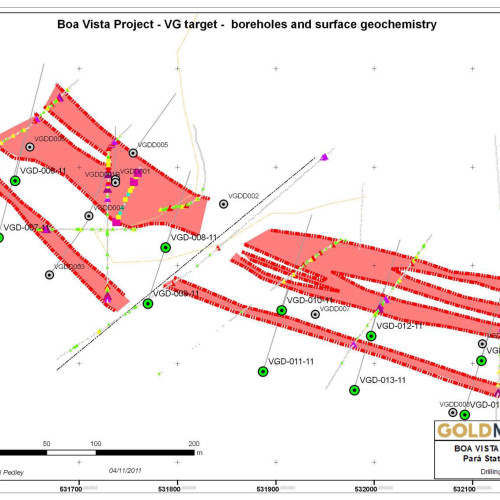Project Snapshot
Overview
The Boa Vista Project is comprised of one property located 65 km southwest of the Company’s advanced stage São Jorge project located within the top-tier Tapajós Gold District. The land package comprises 3 exploration permits totalling 9,201 ha (92 km2).
The primary VG1 gold occurrence has 650m E-W strike, drilled to 400m depth with gold grades up to 22.3 Au g/t, the mineralization is open at depth and to the west.
Location
Tapajós Gold District in Pará State, Brazil
Property Size
9,201 ha (92 sq km)
Ownership
84% (with an option to acquire 100%)
Commodity
Gold
Infrastructure
All-year access by road, small airplane or boat.
Deposit Type
Orogenic
Location
The Boa Vista Gold Project is located in the southeast of Pará State, Brazil, in the municipality of Itaituba. The region is known as Tapajós Gold District and Boa Vista is located approximately 350km south of the main regional city Itaituba. Access to the Boa Vista Gold Project from the cities of Itaituba or Novo Progresso is via highway BR-163 and artisanal mining roads, or via a 1.5-hour flight in a light aircraft from Itaituba.
The Project comprises 3 exploration permits covering an area of approximately 9,201 ha (92 km2) in the Tapajós Gold District of Pará. GoldMining INC has an option to acquire 84% equity.
Tapajós Gold District
The Tapajos Gold District is estimated to have produced over 20 million ounces gold from artisanal mining of surface deposits, according to the Brazil National Mining Agency.
The now paved Hwy BR-163 has reduced hurdles for more traditional bedrock mine development in the region, including Serabi Gold plc.’s (“Serabi”) producing high-grade underground Palito Mine and G Mining Ventures Corp.’s (“G Mining”) Tocantinzinho open pit mine development project (G Mining Ventures Corp.) which is reportedly >75% constructed as of January 15, 2024.
Hardrock gold mineralization defined to date within the Paleoproterozoic Amazon Craton comprises structurally controlled hydrothermal deposits broadly regarded as being of orogenic type. However, growing evidence of copper-gold geochemical anomalies associated with magmatic intrusive centers has led explorers to target porphyry-style mineralization.
Both G Mining and Serabi have discovered porphyry style mineralization on their exploration claims, comprising the ‘Santa Patricia Copper Anomaly’ and the ‘Matilda Copper Project’ respectively. Reprocessed geophysical data from São Jorge indicates the potential for porphyry intrusive centers on the Project, analogous to the recently reported Matilda porphyry discovery located approximately 50 km to the northwest.
Geology and Mineralization
The Boa Vista property is underlain by granites, granodiorites and mafic volcanics. Bedrock surface exposures identify east-west, northwest and northeast shear structures with quartz sulphide veinlets, silica breccia and stock works hosted in sericite and pyrite altered and foliated granite and mafic volcanic rocks.
Mineralization at most prospects is considered to be mesothermal in nature, however at some of the prospects, vein textures suggest it may be epithermal style mineralization that formed in a shallower environment.
Gold Mineralization:
The VG1 gold deposit is located 1 kilometre south of the base camp along the western portion of the property and is underlain by granitic and mafic volcanic rock types. Coarse visible gold hosted in silica veined and brecciated rock was first discovered in surface outcrops at VG1 in 2010.
Subsequent soil geochemical surveying has outlined a gold-in-soil anomaly trending to the west-northwest over 2,000 meters in length and up to 350 metres in width.
Gold mineralization is directly associated with sericite, carbonate, silica and pyrite alteration associated with quartz stock work and brecciated granitic and mafic volcanic rocks.
Activities:
- Historic drilling completed: 15 holes (3,000 m)
- Extensive geophysical survey, including 16km of Induced Polarization
- Extensive soil sampling program, over 10,000 samples
- Primary vein hosted bedrock gold deposits defined, as well as large scale saprolite/colluvial mineralization identified.

